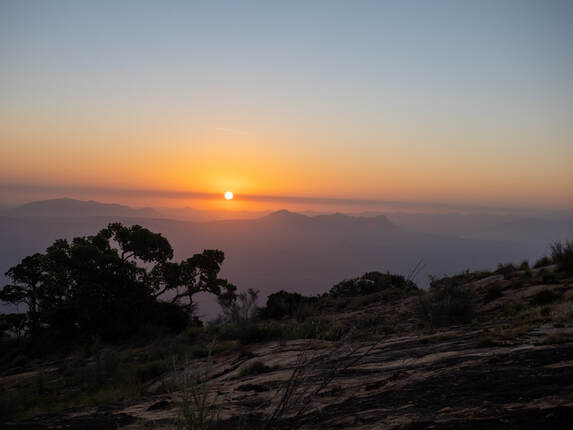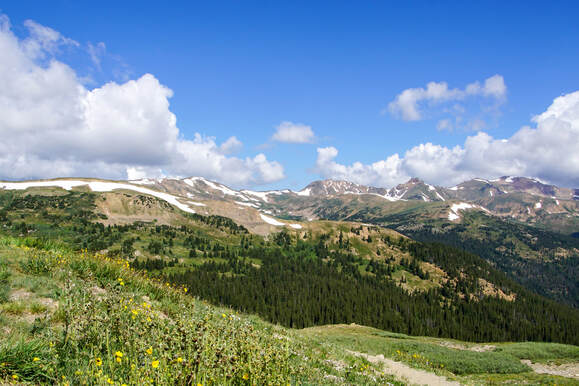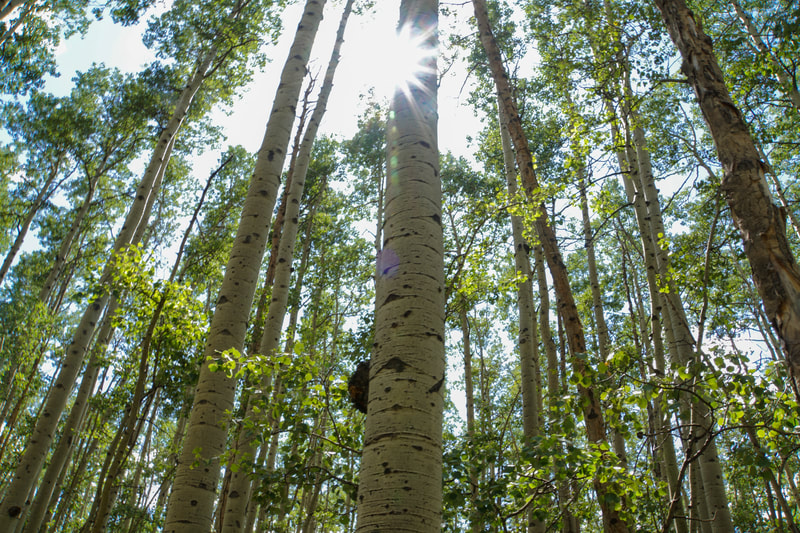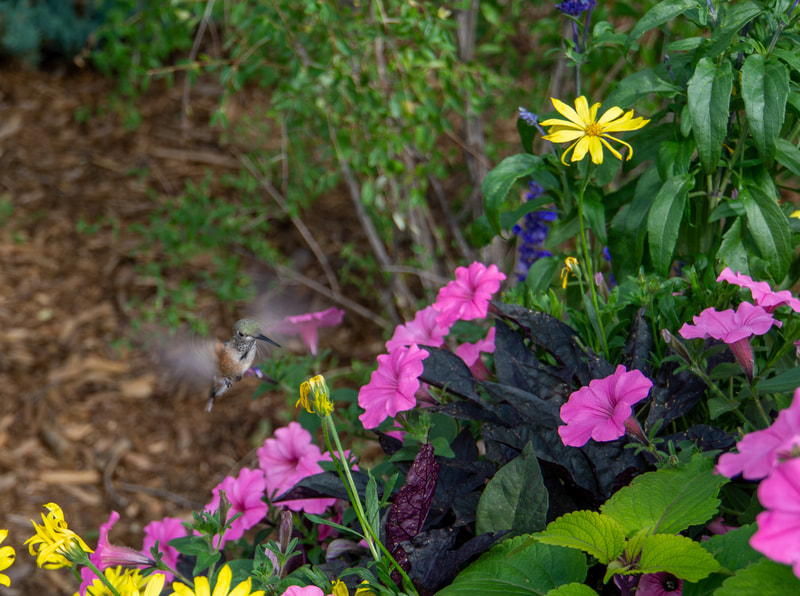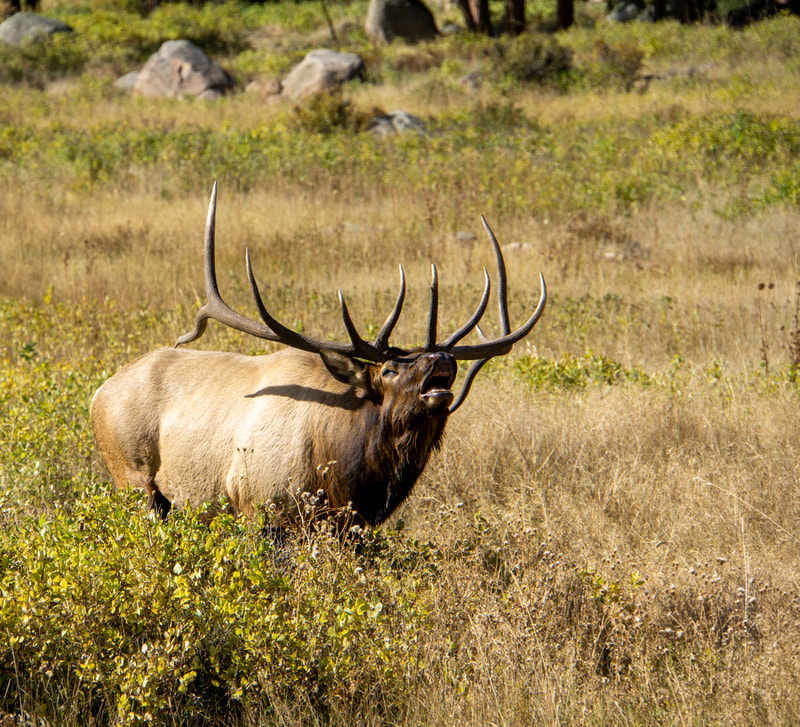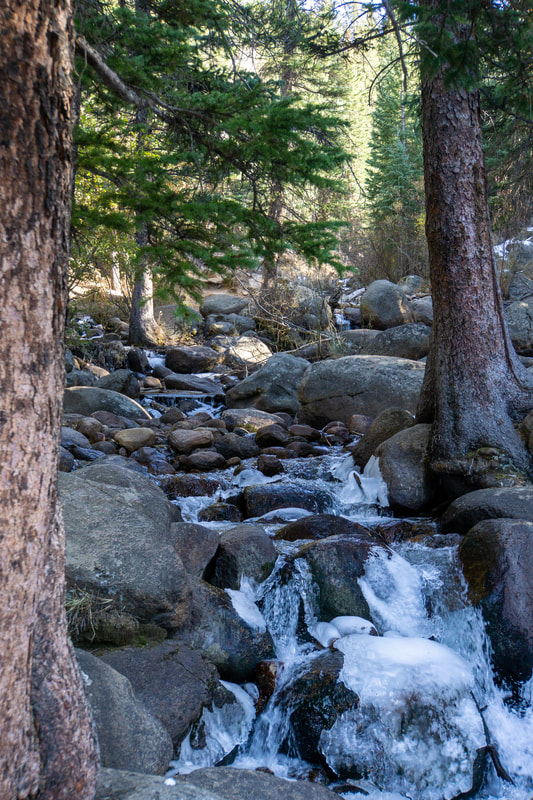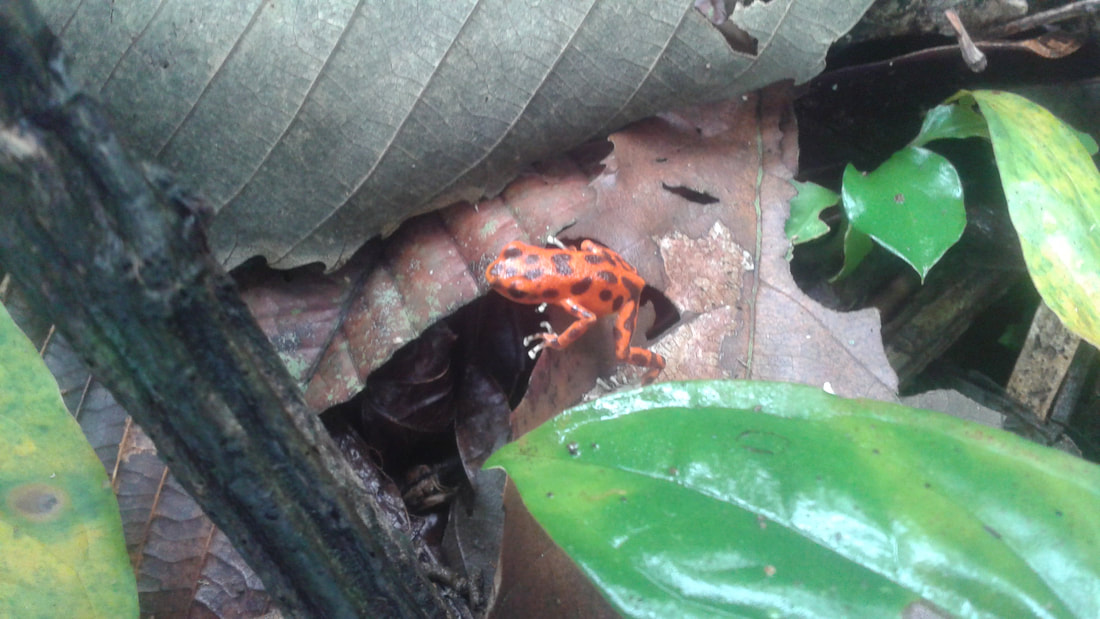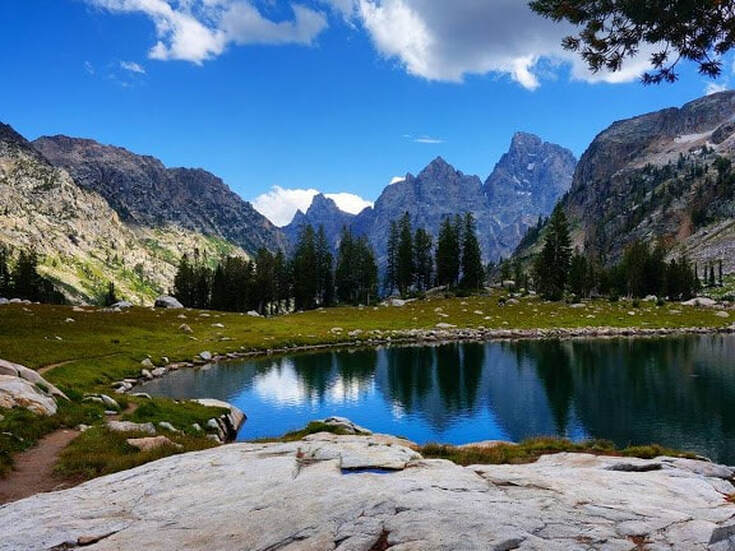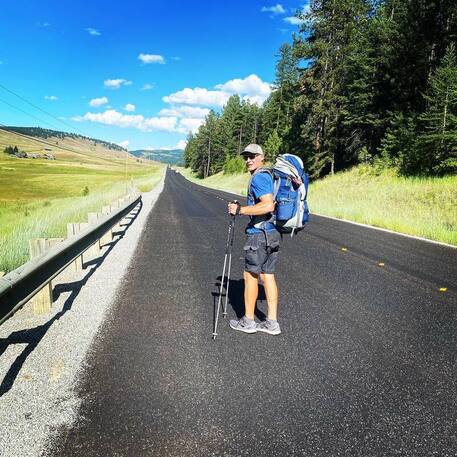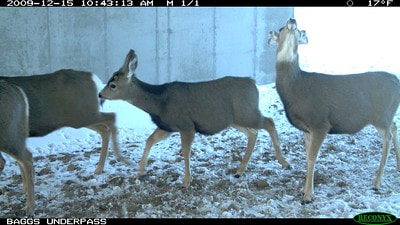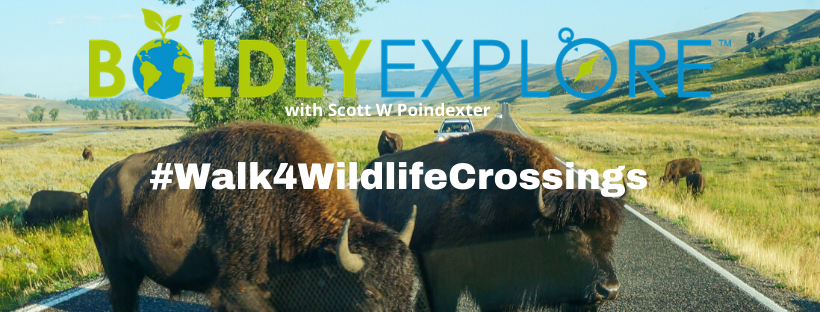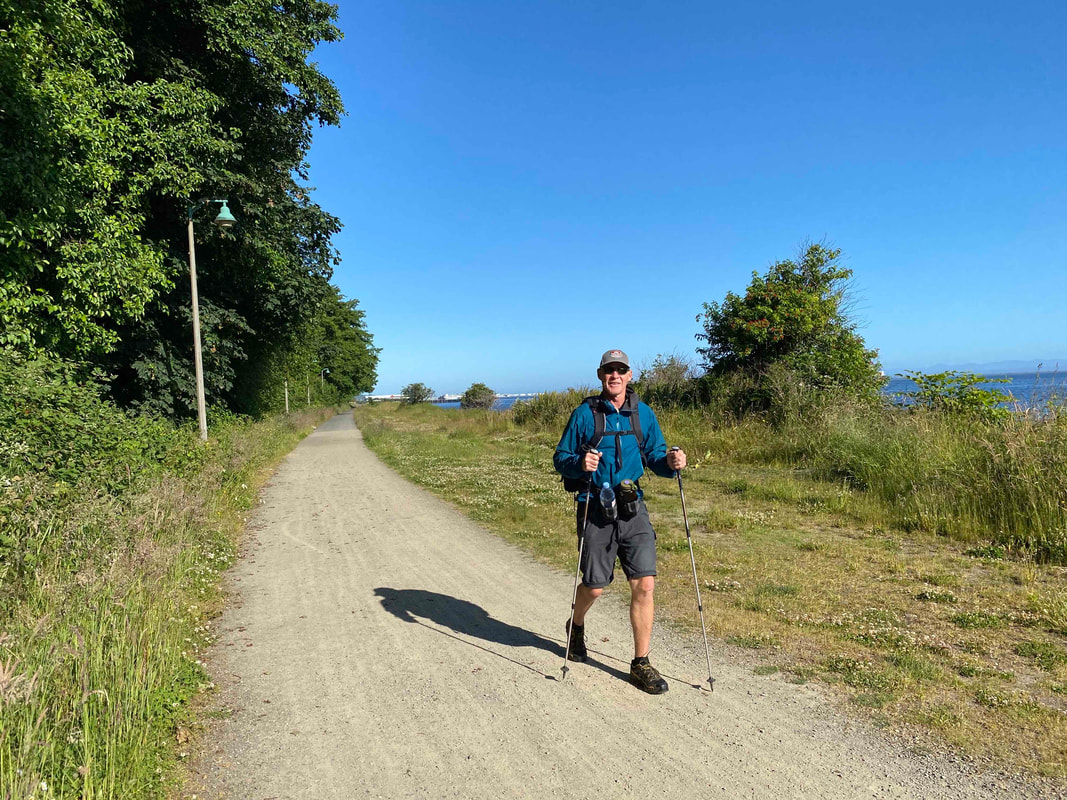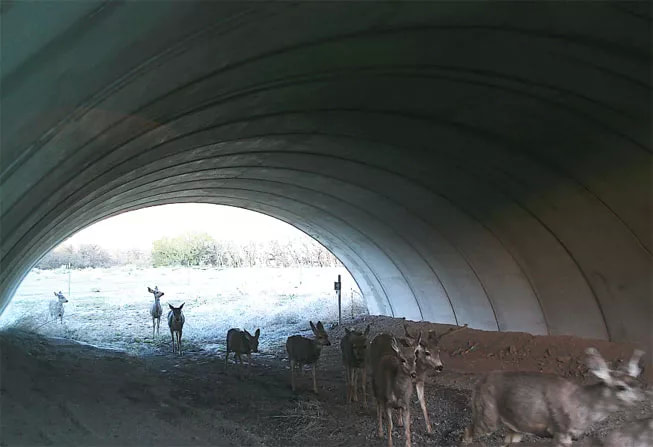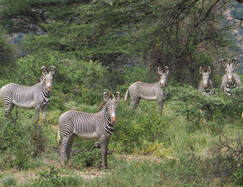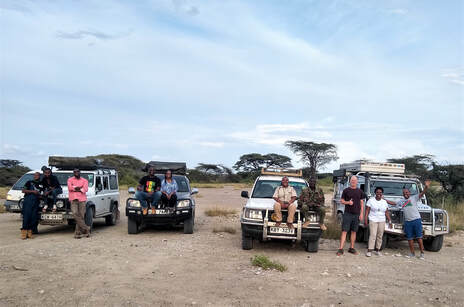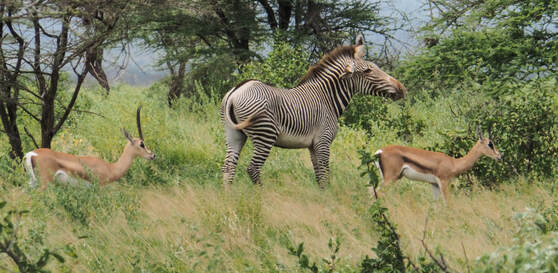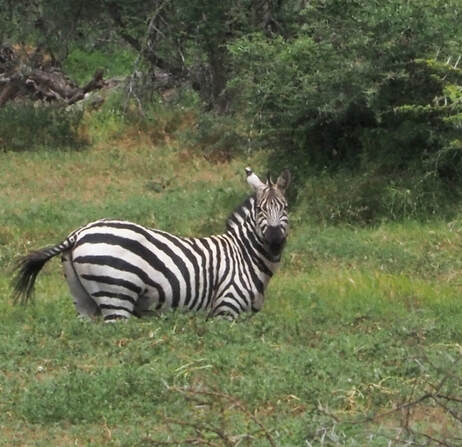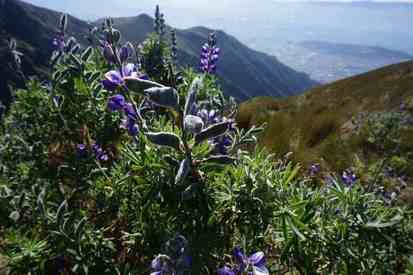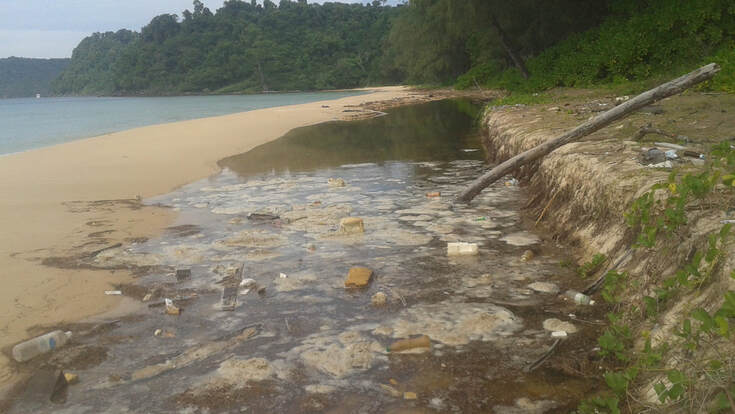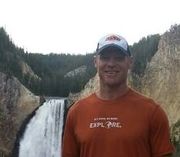|
Have you ever heard of Kaplan's attention restoration theory? How about Plutchik's psycho-evolutionary theory of emotion? Both of these theories stress the importance of bringing nature into one's life. The attention restoration theory, hypothesizes that exposure to nature helps us to renew attention after challenging mental endeavors, improving our focus and ability to concentrate. The psycho-evolutionary theory takes us back to our ancestral development. Plutchik theorizes that primary emotions are evolutionary, and that our responses to these emotions are likely to deliver the highest level of survival possibility. For our ancestors, this would be things like open spaces enabling us to be alert to predators, and water... things you can find in nature. Since these are hard to come by in our urban societies, it makes sense that city residents are prone to higher levels of stress, anxiety and depression. Not only is spending time in nature enjoyable, but research shows, that it really helps us. I was lucky to grow up in an environment where nature was all around me, and with my dad's job with the Environmental Protection Agency, I understood the importance of conserving nature. However, life landed me in the doctor box, and eventually in real estate. I had accumulated debt over the years, and found myself missing out on the nature that had graced my childhood. When I became debt free in 2012, my life finally opened up, enabling me to experience the world as I had always imagined it. I took myself off to new pastures, traveling through the Americas, Europe and Asia, hiking, diving and experiencing the best that these places had to offer me. All the while, sharing my travel stories with people I met along the way. I discovered that my true passions are a love of the outdoors, taking part in physical activities, and promoting healthy living, all while learning more ways protecting our vulnerable planet. My life was turned around, and I realized that what had helped me, was pushing aside my fears and having the confidence to get out of the rut. Returning to the US, I knew that I had to help others acquire their adventure dreams by passing on my new found knowledge and passion. This led me to create BoldlyExplore, and offer up Adventure and Nature Wellness opportunities to others. This is a achieved through outdoor adventure, travel, and fun activities, all personalized to suit you, while improving your mental, emotional and physical well-being, and helping planet earth along the way. Although I have an accomplished academic background, with a Bachelor of Science in Agricultural Business/Food Science, and a Doctorate of Chiropractic Natural Healthcare, plus I'm a certified personal trainer through CSCS (Certified Strength Conditioning Association), what truly sets me apart from other coaches, is my life experiences, after turning my back on the doctor life. In the past, I coached other doctors to build their businesses, having had three practices of my own, and I coached hundreds of patients in health, wellness and nutrition. Now, I've brought together my passion for nature and adventure, with my vast coaching experience, to help you achieve this incredible zest for life that I now have. BoldlyExplore is blazing a trail not well taken, and I accept the underdog status. I believe meaningful adventure experiences, will lead to positive life changes for my travel clients." Dr. Scott W Poindexter Chief Adventure Officer/Founder, BoldlyExplore
0 Comments
Do you ever feel overwhelmed by the never ending noise and fast paced actions of western society? Concrete, plastic, noise, destruction, consumption? it never seems to end and it takes a huge toll on our human emotional, physical and spiritual well being. "Look deep into nature and then you will understand everything better" Albert Einstein CRAZY! Nature-based recreation has declined 35 percent in the U.S. in the past four decades, according to the Proceedings of the National Academy of Sciences. I'm not sure I need to go to deep into research articles to convince anyone of the above truths. A quick google search will bring up numerous articles to read. But here you go for you worker bees from Entrepreneur believe it or not about taking work outside. And here's a recent article published by Yale University Forestry and Environmental Studies on Ecopsychology! And one of the greatest articles to read about this truth is "Take 2 Hours of Pine Forest and Call Me in the Morning". shows numerous benefits from walks and experiences in nature (without your ipod or phone) decreasing stress hormones, increasing immune cells and calming of the prefrontal cortex our thinking area. It needs rest. Yet, reading articles does nothing to get you into nature and out on an adventure by yourself or with family. Take a moment right now just stop and imagine a trip into nature into fresh air and being surrounded by beautiful colors no car or western noise to find just pure natural sounds of the wind, birds, squirrels the music of nature. Take a moment and think how can I and my family reconnect with nature today? are you in a city find a park hopefully not to crowded so you can find a safe space to just sit and observe the trees, grass, flowers, birds and any other nature and wildlife. Can you get out of the city? no question the effort to do so will rep great rewards to your emotional, physical and spiritual happiness. "Nature always wears the colors of the spirit" Emerson And while you're at it take a few moments to locate a local organization that supports and works to keep nature, wildlife and wild places in and around your area protected. Remember the "butterfly effect" anything you can do will make a difference not only for you but for future humans on this one planet. This is a fantastic way to get yourself out into nature and connect with others who understand the benefits of being involved in the natural world.
Last, PLEASE not only be respectful of others that may be out for nature yet also the places you visit. At a minimum use the Leave No Trace 7 Principles for your natural wildlife and wild places experiences so these places and wildlife remain healthy as well. And as always remember... Explore On BE a WILDLIFE difference maker Hello… so I got to thinking how can we/you make a Wildlife difference when people are so busy? MY BUTT NEEDS YOUR HELP PLEASE. In this post I'll show you how sitting at home, the office or from about anywhere you can make a huge impact on conservation efforts.
5 Quick Tips on How to Explore and Have Fun in the U.S. National Parks with a Conservation Mindset11/3/2021 Would you like to have a better experience for you and your family on your travel to a National Park? Read On “Thousands of tired, nerve-shaken, over-civilized people are beginning to find out that going to the mountains is going home; that wildness is a necessity” ― John Muir, Our National Parks 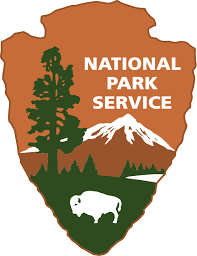 that cover 52.2 million acreas, more that anyone could ever cover in a lifetime. Amazing Right! And every year millions of people travel to and visit these parks and never really understand or appreciate what it has taken, what it still takes and most importantly will continue to take for these national treasures to survive. What each of us does before, after and while visiting any national park can either help or greatly damage these national treasures. The nature, wildlife and natural resources inside the parks. What you'll get from this blog post to help your travel plans are great tips on how to get the best experience out of your trip to national parks. As well as do more than just visit by "making a difference" while visiting and after you leave the national park(s). By now, I hope you’re all familiar with my mission… to cross the states from west to east in a bid to raise awareness of the need for more wildlife crossings in our country. However, it can’t just be down to me. I need your help in bringing more of these crossings to the problem highways. There is a proposed wildlife crossing that I am excited about, for the Upper Rio Grande Valley. The National Wildlife Federation is working with the Colorado Wildlife Federation, New Mexico Wildlife Federation, and other partners, to establish federal protections for wildlife habitat connectivity. The corridor would cross three national forests: Rio Grande in Colorado, the Rio Grande del Norte National Monument, and the Carson and Santa Fe in New Mexico. Some of the incredible species that will benefit from the corridor will be elk, bighorn sheep, mule deer, pronghorn, lynx, black bear, mountain lions, and the rare Rio Grande cut-throat trout. It’s still along way off implementation though, and we still need far more wildlife crossings to help animals, and save lives.What animals currently benefit from crossings in the US?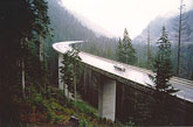 Wildlife bridge crossing: I-90 in Washington. Image: FHWA. Wildlife bridge crossing: I-90 in Washington. Image: FHWA. My first state to cross was Washington. The state completed the I-90 Keechelus Lake Wildlife Overcrossing in fall 2018, which has already documented animals such as deer, coyotes and small mammals using it. There are also a few underpasses around Gold Creek, Snoqulamie Pass, Keechelus Lake, Rocky Run Creek and Resort Creek, that benefit both fish a wildlife. 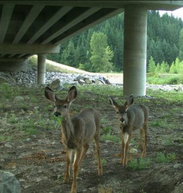 Two mule deer use a wildlife undercrossing at I-90 near Snoqulamie Pass. Photo: WSDOT Two mule deer use a wildlife undercrossing at I-90 near Snoqulamie Pass. Photo: WSDOT My next stop on my walk is Montana, and I hope to see some of the pronghorn and greater sage-grouse that currently are offered protection during their migrations across The Northern Great Plains. The corridor extends from Montana into Canada, support the longest migrations for both species. I’ll also be walking through Wyoming and Yellowstone National Park, home to the largest distribution of mammals in the lower 48 states. Wyoming proudly have the Red Desert to Hoback mule deer corridor, which supports the longest mule deer migration in the U.S. There’s also a network of crossings that has reduced deer collisions by around 80%, at Nugget Canyon and near Baggs.Hopefully these inspire you to want to save some of your local wildlife, that are often involved in road accidents. So what can you do to get involved?Get behind the Wildlife Corridors Conservation Act: an important legislation that will be a huge step towards improving wildlife movement in the United States. It is currently referred to Congress’ Committee on Environment and Public Work. Tweet them to ask them to push Senate Bill 1499. Sign the petitions. It only takes a minute. We’ve listed some of the ones currently online: Wildlife Crossings in Colorado: http://www.wildi70.org/i_support_wildlife Wildlife Crossings in Georgia: https://www.change.org/p/johnny-isakson-georgia-wildlife-crossing Wildlife Crossings in Indiana: https://www.change.org/p/evansville-city-mayor-evansville-environmental-protection-agency-evansville-parks-and-recreation-implement-the-construction-of-wildlife-crossings-within-in General wildlife crossings in US/Canada: https://www.thepetitionsite.com/300/596/513/wildlife-crossing-bridge/ 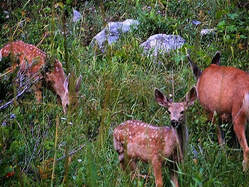 Red deer: Scott Poindexter Red deer: Scott Poindexter Contact your local congress men and women, to ask them to get behind the implementation of wildlife crossings. Do your research, and find the problem roads and highways in your area, if you’re not sure where to suggest a crossing should be erected. If there is data to backup the number of vehicle collisions on the proposed road, have it available to show them. Find your local senator. 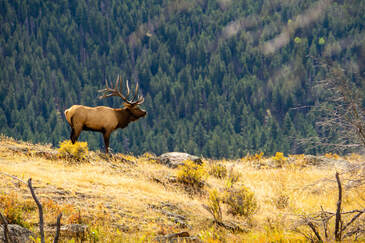 Elk: Scott Poindexter Elk: Scott Poindexter Remember, when approaching decision makers, its always best to make sure they understand the cost implications and benefits. A great example is the Dead Man’s Flats underpass on the Trans-Canada Highway, which was constructed in 2004. Large mammal vehicle collisions in the five years prior to the underpass being implemented, averaged 18 per year, which is around $154,000. In the five years after the underpass was constructed, there were less than five large mammal vehicle collisions per year, which equates to around $21,000. If installation costs around $525,000, the crossing pays for itself within five years, since the savings are around $110,000 per year.Support the local and national organizations, who are working towards implementing more wildlife crossings. Here are the ones I’ve come across during my mission: Washington: Washington State Conservation, Conservation Northwest Montana: Montanans For Safe Wildlife Passage (MSWP) Wyoming: The WYldlife Fund, Wyoming Department of Transportation (WYDOT) Colorado: Rocky Mountain Wild, Colorado Wildlife Federation Watch this 25-minute safety training program, brought to you by the Forest Service. It’s aim is to help you reduce your chances of having large animal-vehicle collisions, especially with deer. 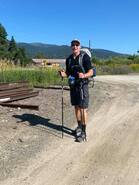 Sandpoint, ID Sandpoint, ID Get the media involved. During my walk, I have had the opportunity to conduct a couple of interviews to gain more interest in my mission. You can write into your local paper, or organise time on air, at your local radio station. Social media is also a powerful and easy way, to raise awareness. Here is the media coverage I have had so far: Radio Interview - Omak, Washington listen here Radio Interview - Montana University listen here Article - Cascade Weekly - Man on a mission Follow my mission, to get more inspiration to support wildlife crossings and help me get my voice heard:
Facebook.com/BoldlyExplore YouTube channel: https://m.youtube.com/channel/UCFE3N_qEr4nvYwBdFOfFZaw My Go Fund Me page: https://www.gofundme.com/f/walk4wildlifecrossings #Walk4WildlifeCrossings After witnessing too many animal deaths on the roads of Colorado and around US leading tours, I have been inspired to walk across America to raise awareness and support for the development of wildlife crossings. What are wildlife crossings?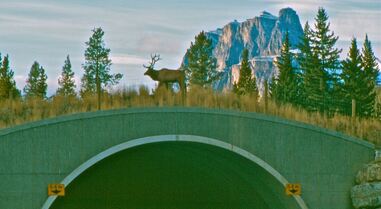 Photo: JH Alliance Photo: JH Alliance How many of you have had a close call with an animal trying to cross the road you're driving on? Most of us have had that experience, if not with larger animals like deer, certainly with birds or tortoise. Sadly, up to two million large animals are killed by motorists every year in the states. More than 20 animals that are caught in the headlights, are federally listed as threatened or endangered species. Just crossing the road poses a huge threat to their survival. Now, more than ever, its obvious that animals need our protection. 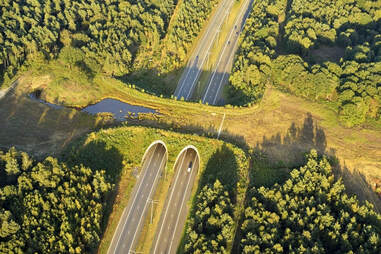 Wildlife Crossing in the Netherlands Wildlife Crossing in the Netherlands Wildlife crossings are structures designed to prevent those close calls and collisions with animals. The crossings include both underpasses, and overpasses, that offer safe passage under or over roads, for animals such as moose, deer, coyotes, cougars, bobcats and raccoons, to name but a few. Most of these structures have fencing that helps to direct the animals into the crossing's entrance. They're also designed to look as natural as possible, to blend in with the environment. Plus, they are robust easy to maintain, so they can last for decades. The number of animals killed on the roads of the US is one million, daily...... when you include all creatures great and small. In New York state, they report that an average of 65,000 deer are struck by vehicles each year. That's just one species, in just one state, in just one year. Wildlife crossings can help avoid up to 95% of animal road deaths, on a stretch of road.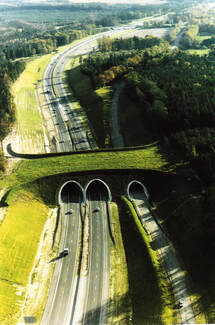 Wildlife Crossing, Netherlands Wildlife Crossing, Netherlands The idea has been around for decades now, with Europe having the most crossings. Holland alone, has almost 70 wildlife crossings, for their deer and other animals. The states is ramping it up with building these crossings, understanding that not only are they beneficial to the conservation of wildlife, but are also safer for humans, and better for the country's pocket. However, far more are still needed. How does it save money? The annual average of reported wildlife vehicle collisions in the states are 300,000, according to the Federal Highway Administration. The actual total, is likely to be far higher, considering that most wildlife collisions go unreported. In fact, the estimated cost of wildlife vehicle collisions, is over $8 billion annually in property damage, plus countless dollars of human suffering.Although quite costly to implement one of these crossings, the average cost of building and maintaining a wildlife passage with fencing is only $18,123 per year. So wildlife crossings save animal deaths, human deaths and injuries, and tax payer's money!However, there are still far more wildlife crossings required across the states. The Western Transportation Institute confirmed that over a 15-year period, wildlife-vehicle collisions have increased by 50 percent. Millions of animals remain at risk, and thousands of people are still injured and hundreds killed in these collisions. I'd love to see many more of these crossings along my path. Though as an animal advocate, I know that these crossings are not for me, and to avoid getting too close to the structures. 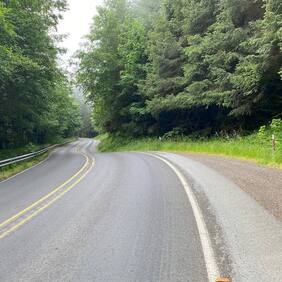 Embarking on my #Walk4WildlifeCrossings - Peninsula of Washington State Embarking on my #Walk4WildlifeCrossings - Peninsula of Washington State What people need to realise, is that these crossings are not made for us humans. When we start using these passes, to shave off a bit of time during a cycle or hike, we render the pass off-putting to the animals who would normal use it. Our scent lingers, and can scare off the users it was made for, ruining their safe passage. So if you do come across one of the few crossings established in the states, please avoid it. Animals need our help now, more than ever, and my goal is to help them, by helping to promote the idea of wildlife crossings, in a bid to establish more of them across the roads and highways of America. You can follow my mission to walk from Washington, to Florida, on Facebook.com/BoldlyExplore I've also been vlogging on my YouTube channel so check it out and please subscribe https://m.youtube.com/channel/UCFE3N_qEr4nvYwBdFOfFZaw If you are able, you can also help me and the project, by donating via https://www.gofundme.com/f/walk4wildlifecrossings #Walk4WildlifeCrossings How to have an Adventure while Saving Endangered Species: The Great Grevy's Rally...Kenya, Africa5/6/2020 By far one of the most fun and rewarding ways to enjoy the outdoors in your own area or while traveling is to get involved with an event to save endangered species. The Great Grevy's Rally in Kenya, Africa is one of those amazing, fun, exhilirating and fulfulling experiences. It's a part of the great work that the Grevy's Zebra Trust does to keep this beautiful animal on our one planet. I was blessed to be traveling in and around Kenya and found out about this event through other world travelers Every area in some capacity has events designed to invite in the public to help out in saving nature and wildlife.A simple internet search can bring up different events and organizations today/now look around and find one that you'd like to get involved with you won't be disappointed. Here's an example with a quick search I found citizenscience.gov and inside found inaturalist.org. There are many ways to get hands on involved, think about what nature and wildife are important to you look locally or globally. What an amazing weekend tracking and photographing these beautiful creatures in their natural habitat. They definetly have personality and it was on full display throughout the weekend. We'd observe them playing with each other as well as other species which hang around them. Why you ask do different species hang out is because the more eyes the easier to spot a predator in the area so it's a community project watching out for one another. Just like this event is a community project and I made life long friends hanging out with like minded special people of Kenya! The Great Grevy is one of only 2 zebra species in Kenya, the other the plains zebra is not endangered yet has depleted numbers as well. Every 2 years, so the next one will be early 2022 (mark your calendar) the Great Grevy's Rally brings together scientists, conservationists, environmentalists and citizens you and me (citizen scientists) to count the Zebras by photographing as many Grevy's in their habitat as possible over a weekend. You can be a citizen scientist wildlife photographer and make a difference by joining in this wonderful event.The Grevy's Zebra Trust does many other activities to entrust the future of these animals as well as the other animals their existence affects. One of those great ways it Schools & Scholarships educating the leaders of tomorrow of why Zebras are an intregal part of the ecosystem that sustains human life. Yet, they can't do it alone and they need help more than ever. Don't wait look around your area, reach out to local conservation organizations and others to see what opportunities they may have. Even better maybe reach out to a local or regional wildlife organization and "create your own event" inaturalist.org is an example to learn and create your own project to bring awareness to an endangered or valuable(they're all) species in your region. Check out these Earth Loving Organizations I have listed for more ideas. If you know of any please send me a quick note so I can add it to my list and/or this post.
So get out there roll around return to nature and while doing it make a difference so nature is here for many generations(your decendants) to come. Explore On Scott Tips for Investment Planning that helps Conservation of Wildlife, Nature and Natural Resources.1/7/2020 Are you frustrated? |
|
What Difference do we Want To Make....
Please first ask yourself the above question then take a moment to think beyond oneself. What Difference Do we Want To Make….As we contemplate the question “What Difference I Want to Make” it comes to me that not only myself but I believe so many other people have no idea what impact we are having on our only Home Mother Earth. And then others who do know and understand are........ |
Get involved with Ocean Plastics Conservation Efforts
Scott
Coach
Explorer
Conservationist Traveler
Adventure
Rugby
Hi. I'm a regular person, just like you. Who decided to stray from the normal path and explore more of this beautiful planet.
Archives
October 2023
September 2023
October 2022
November 2021
October 2020
July 2020
May 2020
January 2020
December 2019
October 2019
August 2019
May 2019
February 2019
October 2018
June 2018
May 2018
April 2018
February 2018
January 2018
Categories
All
Adventure Travel
Conservation
Conservation Travel
Eco-Friendly
Inspiration
Nature
Nature Conservation
Ocean Conservation
Personal Inspiration
Scotts Adventures
Travel
Travel Products
Travel Tips
Wildlife
Wildlife Conservation

